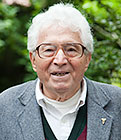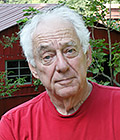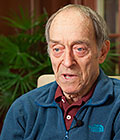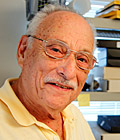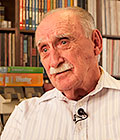The Photographers of LOOK
Over the decade of the 1960s, LOOK hired scores of photographers. In the Sixties Survivors database, we've created entries for 100 photographers. Some were staff photographers; some were free-lancers. All were devoted to to telling compelling stories visually. One of the privileges of this project is the chance to talk with some of the LOOK photographers. Those who have been interviewed are below. As it happens, all of these are older white men, but LOOK also published the work of women photographers like Mary Ellen Mark and Catherine Leroy. Photographers I've interviewed, to date. |
|||
|
|
Douglas Kirkland was born in Toronto. He began his career as an apprentice to Irving Penn. But his dream was to work for LOOK Magazine, so he scheduled a interview with the magazine's director of photography, Arthur Rothstein, who hired Kirkland as a celebrity photographer. He still lives and works in the Hollywood Hills. |
|
Tony Vaccaro was born to Italian-American parents in Pennsylvania in 1922. Both parents died by the time he was eight, and he was raised by an abusive uncle in Italy. He returned the U.S., was drafted, and served in World War II. He took his own 35-mm camera and developed photos at night in combat helmets. |
|
|
Al Clayton was a freelance photographer from the South who produced work for LOOK, Time, Newsweek and the Atlantic Monthly. His most important work was compiled in the 1969 book Still Hungry in America with text by Robert Coles and an introduction by Sen. Edward M. Kennedy. He lived in northern Georgia until his death on Sunday, April 27, 2014, of a rare nerve system disorder. He was 79. |
|
Paul Fusco was born in Leominster, Massachusetts. He became a photographer in the U.S. Army Signal Corps in Korea in 1951-53. After the war he studied photojournalism at Ohio University. He moved to New York and started his career at LOOK. Fusco worked for LOOK until 1971. Most of his photography was of the many social issues that were of major concern in the U.S. and in many other places in the world. |
|
|
Bob Lerner grew up in Milwaukee and began taking pictures with his family's camera as a teenager, went to work for LOOK as a correspondent in the magazine's Chicago bureau in 1951. He photographed for LOOK until the magazine's demise in 1971. "At 76 [in 2003] I'm still trying to figure photography out," he says. "I don't know if I ever will." |
|
V. Thoma Kersh was a free-lance photographer working from the New Orleans area. He had a studio right on Jackson Square. He worked for LOOK, Life, Good Housekeeping, Cosmopolitan, and other publications. One of his favorite assignments was a photo story that he did for Ebony Magazine about a nurse at the Ochsner Clinic in New Orleans. |



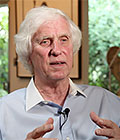
 In this video Kirkland remembers working for LOOK
In this video Kirkland remembers working for LOOK